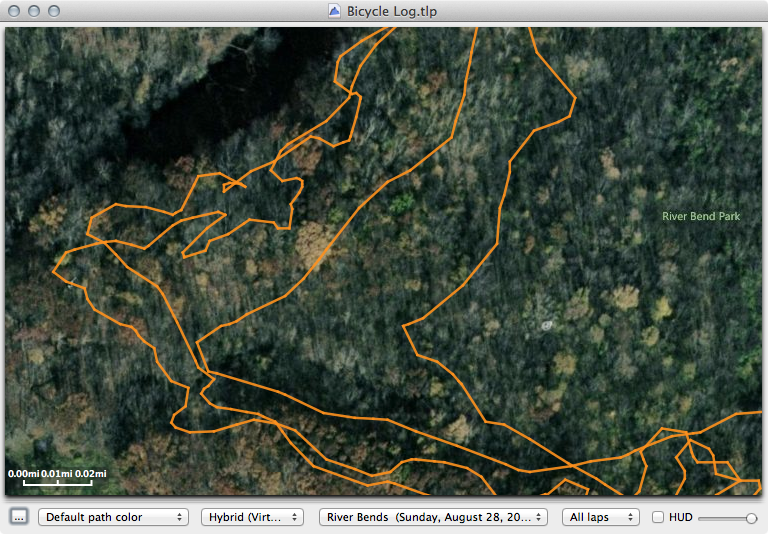As mentioned a month ago I had the parts laying around the house for fitting a Philips commuter bike light to a rigid fork crown. I’ve poked with this on and off over the last month, including taking some time to cut a water bottle to hold the battery and fill/fashion the top of it with leftover GREAT STUFF foam. Tonight I finally put together the power supply, built the wiring harness, mounted a bottle cage to a fork, and put it all together.
This looks like it’ll be a pretty good auxiliary light for winter riding; something to provide some nice, low-angle light to increase contrast / shadows. It’s listed as being ~100 lumens, and being a European commuter-style light it’s designed to cast a rotated D-shaped light, illuminating only the pavement and not shining in other riders’ eyes. Being mounted just above the Mukluk’s large tire this casts a decent-sized shadow, but I don’t think that this’ll be a problem when riding. I’m now just looking forward to the trails freezing so I can get out and try this.
To put this together I used the following items, all of which were sitting around the house unused, generally left over from other projects:
· Philips SafeRide BF60L60BALX1 Light
· Tenergy 14.8V 3Ah LiPo Battery Pack
· Sure Electronics PT-PC021 Step-down Power Supply
· Cannondale Water Bottle
· Random Fasteners
· King Cage Bottle Cage
· Silicone-insulated Stranded Wire
· Cable Ties
· Hot-Melt Glue
· Neoprene Sheet
· Left-over GREAT STUFF (Yes, I was somehow able to save a can and get it dispensing again by removing the nozzle…)
I’m not sure that I’ll stick with the fork mount for the battery, but wanting to keep the main bottle cage empty it seems to be the best option. I also might modify the battery holder to be a bit more solid, but right now I’ve got the power supply wrapped in neoprene which nicely holds the battery in place. This results in nothing rattling around and everything working pretty well, so we’ll see where it goes…
UPDATE: Runtime tests show a little over six hours runtime off of one charge. The setup has also been proving quite durable and reliable. I may switch to a smaller battery and a more permanent mount, but for now this setup seems to be working wonderfully.









